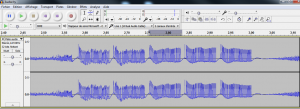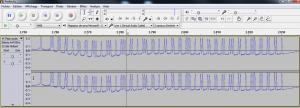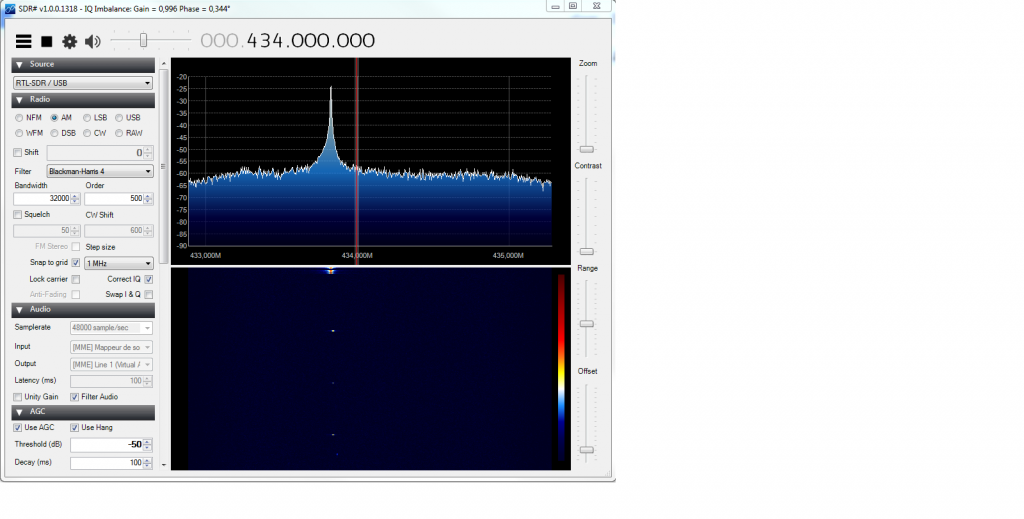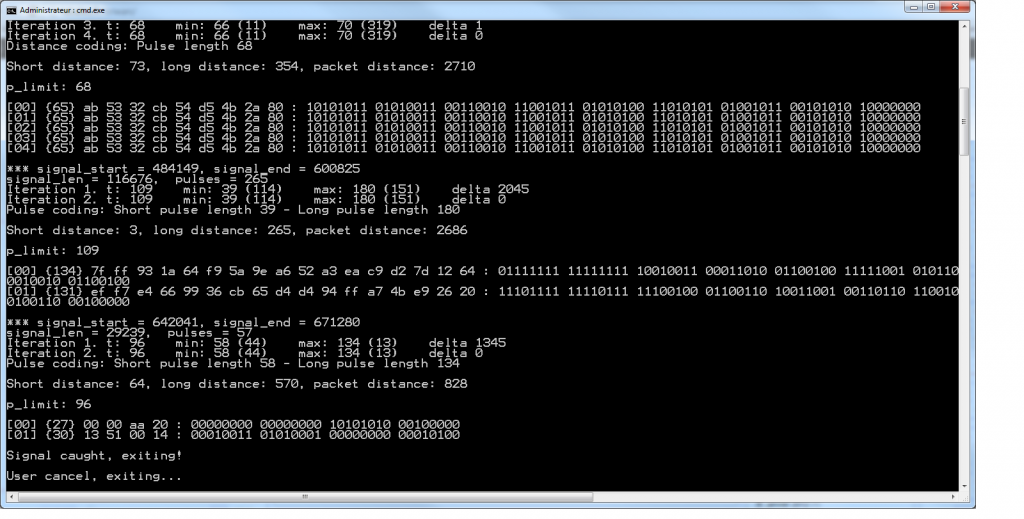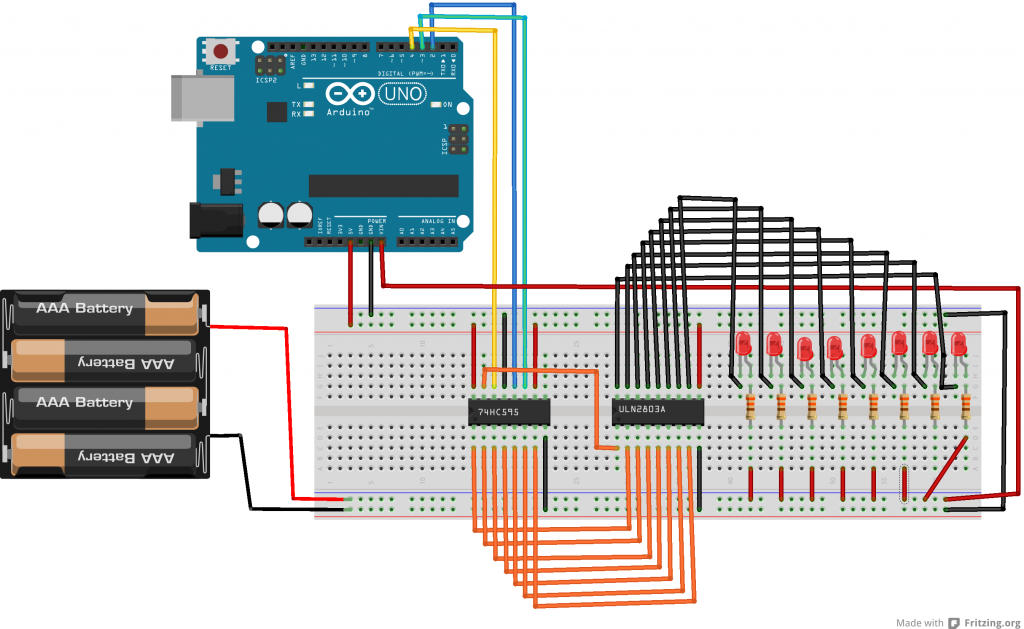In previous article, thanks to a R820T tuner, we managed to capture some RF4333 signal (which seems to be repeated 5 times).
Zooming in one pattern, we can see high and low bits.
Googling around, it appears that my di-o chacon telco is using the homeeasy protocol.
a preamble (before data) is HIGH for 275us and a LOW for 2675us.
a 0 is HIGH for 275us and LOW for 275us.
a 1 is HIGH for 275us and LOW for 1225us.
We therefore end up with 64 bits (wired):
01 01 01 10 10 10 01 10 01 10 01 01 10 01 01 10 10 10 10 01 10 10 10 10 10 01 01 10 01 01 01 01.
Still reading the homeeasy protocol, we learn than 01=0 and 10=1 (manchester encoding).
The result is (32 bits, decoded) :
00011101010010011110111110010000
Bit 0 to 25 is the device id : 11101010010011110111110 -> 7527BE
Bit 26 is the flag group : 0
Bit 27 is on/off : 1
Bit 28 to 31 is the device code : 0000
Now re using this article, we should be able to replay that signal with the right timings.
